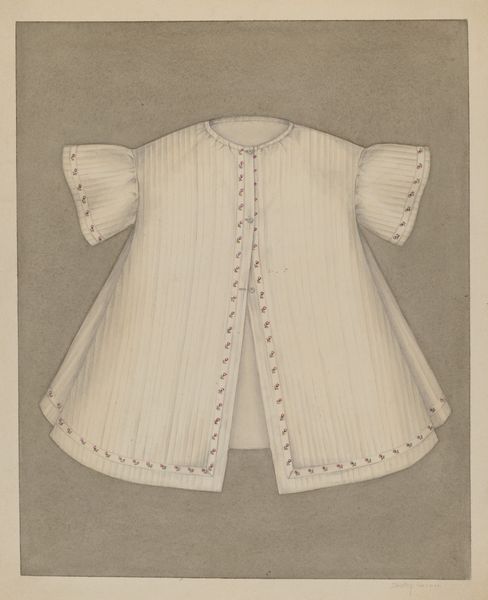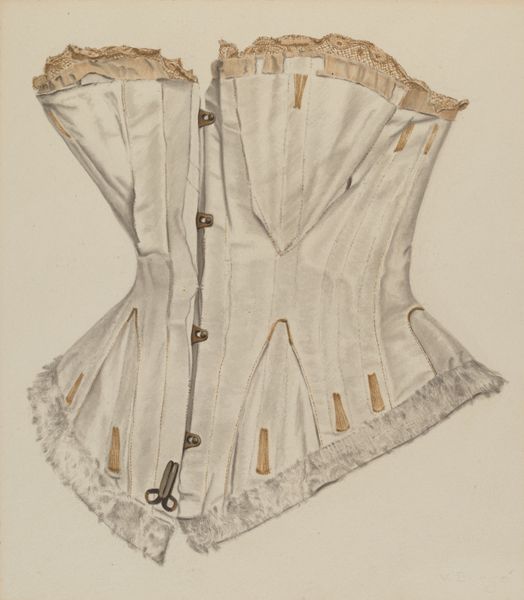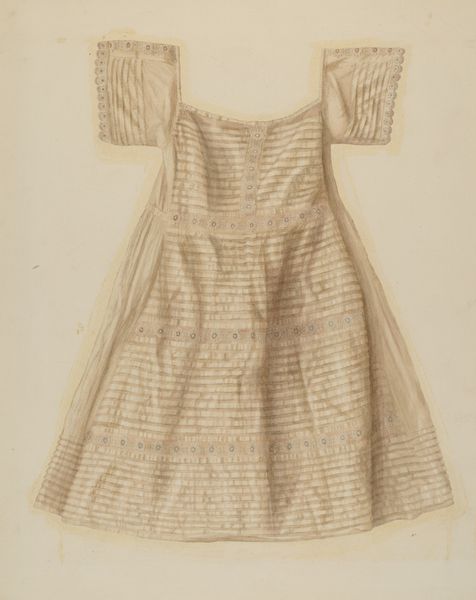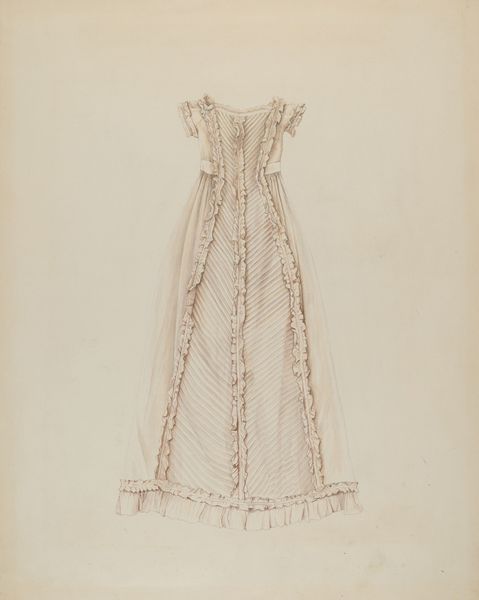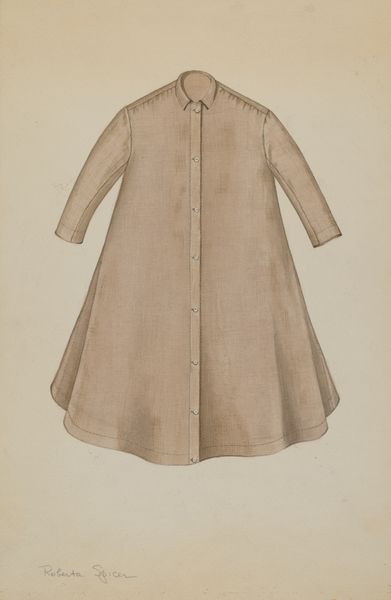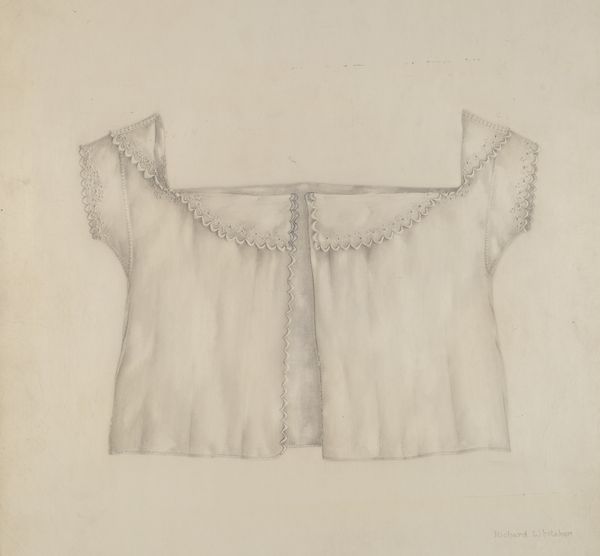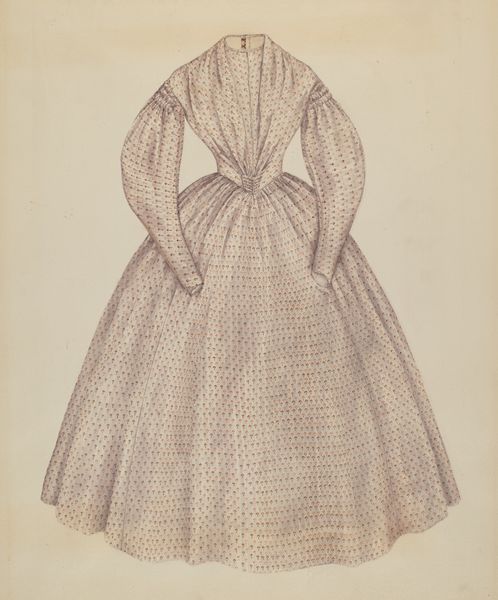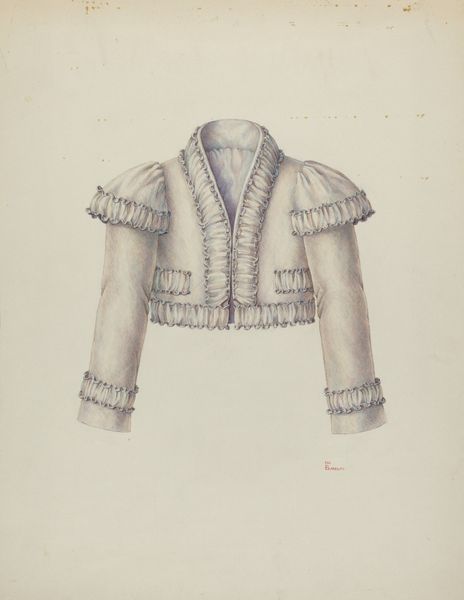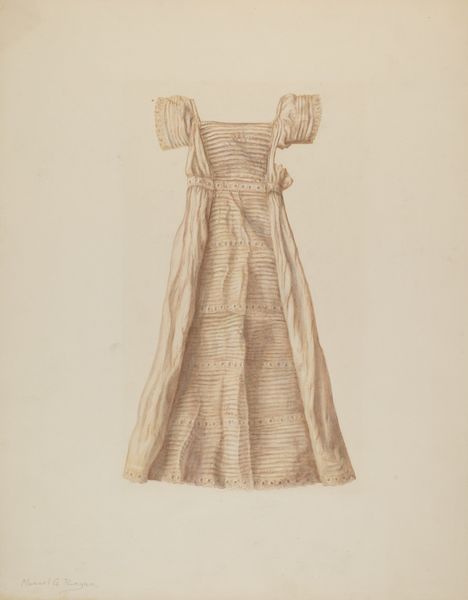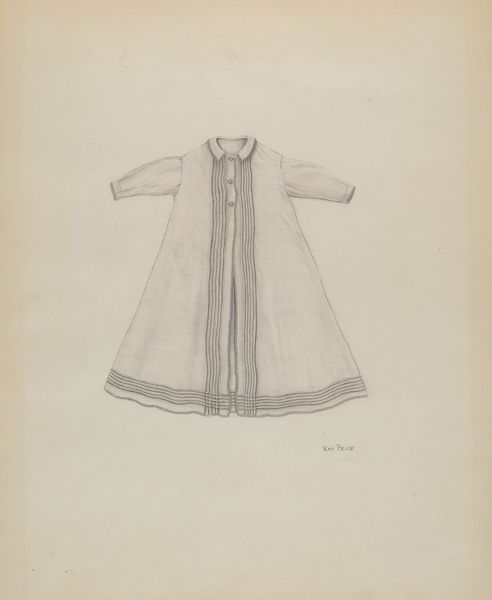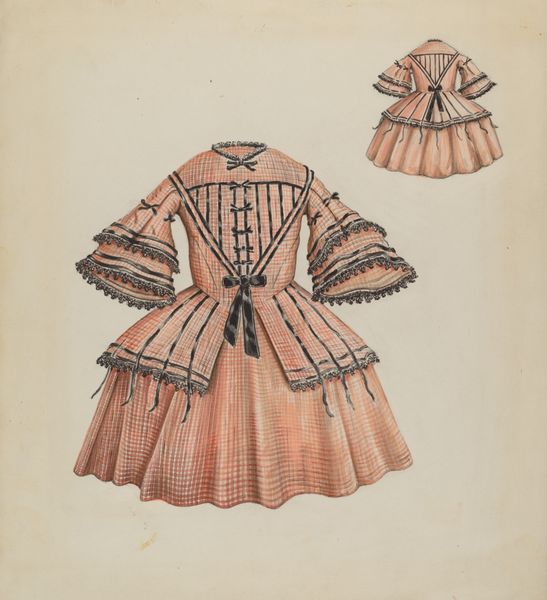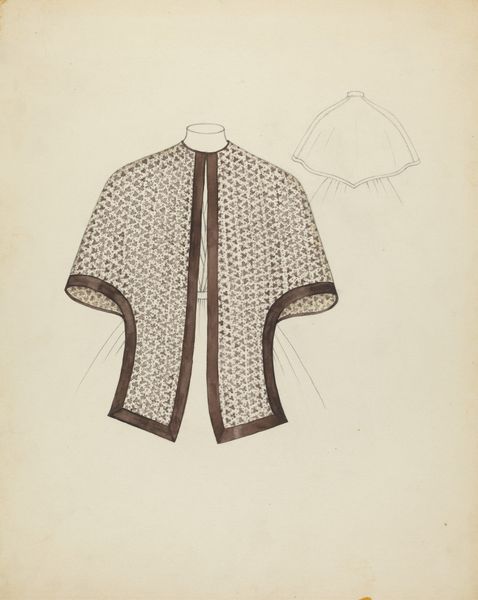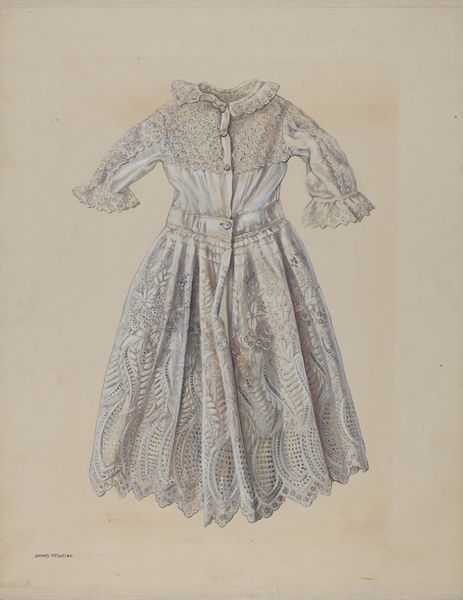
drawing, paper, watercolor
#
drawing
#
figuration
#
paper
#
watercolor
#
watercolor
Dimensions: overall: 36.8 x 29.2 cm (14 1/2 x 11 1/2 in.)
Copyright: National Gallery of Art: CC0 1.0
Curator: Ah, this watercolor drawing, created around 1937 by Dorothy Gernon, simply titled "Boy's Coat"... there's a gentle quality to it that’s immediately apparent. Editor: It strikes me as incredibly fragile. The pastel palette almost drains the object of its physicality, emphasizing a lost tenderness. Curator: Absolutely. You know, it's fascinating how Gernon uses watercolor on paper to create a garment that feels both present and ethereal. Look at the delicate pleating and those small decorative details. I get a sense of almost obsessive care... the tenderness you mentioned seems stitched right into the very fabric. Editor: Well, what does it mean to portray such a banal subject as a boy’s coat? It feels intentional, given its rendering. Who might this boy be, what are his circumstances? What are the broader social dynamics during the artwork's period that Gernon appears to speak to here? Perhaps the artist is interested in marking childhood vulnerability at a time marked by deep social and economic precarity. Curator: It certainly resonates with that perspective. Gernon wasn't necessarily focused on grand historical narratives. I wonder if the act of portraying the garment itself becomes an act of preservation—almost an attempt to hold onto fleeting moments of innocence during, as you say, incredibly fraught times. Think of the looming Second World War and, perhaps on a more micro level, a commentary on the economic disparities of the time. Editor: Exactly. It becomes a meditation on temporality. It also perhaps speaks to how the identity and very material circumstances of children were increasingly becoming objects of discussion—the era’s focus on pedagogy, diet, hygiene… the artwork seems to signal this very transitional state. Curator: I hadn't considered it that way, but I think you're absolutely right. The act of representing it at all implies that, in itself, the coat merits observation—worthy, and telling. Something special about that coat—and what or who it once was… and may never be again. Editor: Agreed. The work encourages a contemplation of both art and history. It's less a straightforward presentation of an object, and more a quietly urgent reminder to acknowledge the narratives—visible and not—entwined with such everyday ephemera.
Comments
No comments
Be the first to comment and join the conversation on the ultimate creative platform.
